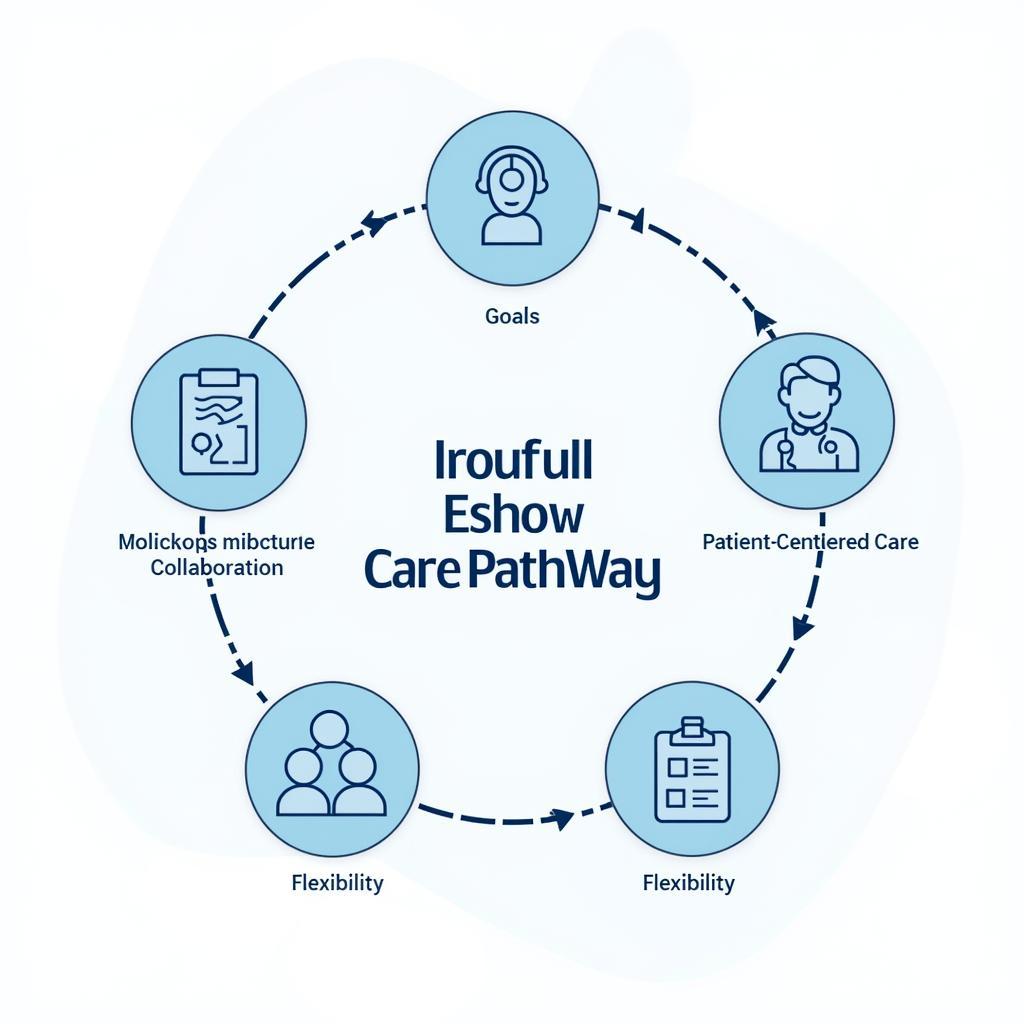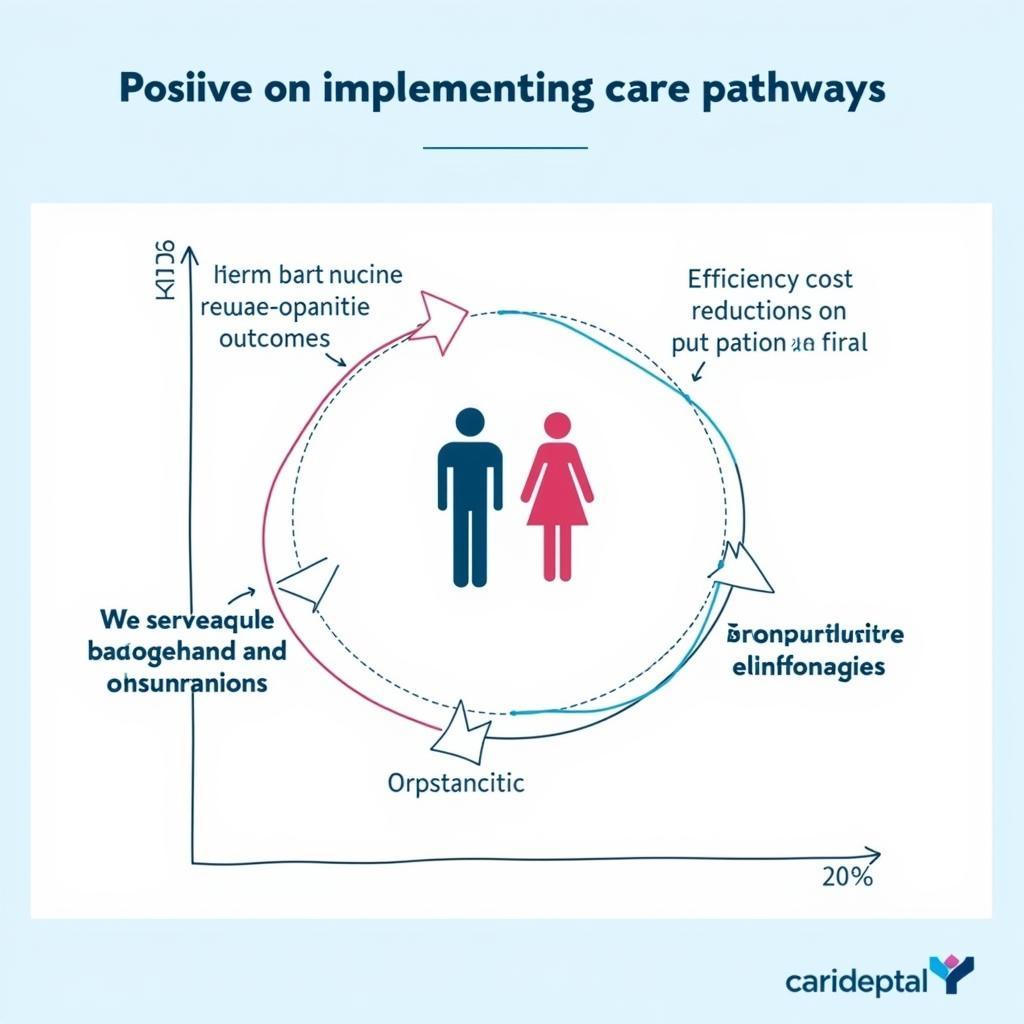Developing care pathways, the tool kit for streamlined and effective healthcare, is essential for improving patient outcomes and optimizing resource allocation. This comprehensive guide explores the crucial elements, benefits, and practical steps involved in building robust care pathways.
Understanding Care Pathways and Their Importance
Care pathways, also known as clinical pathways or integrated care pathways, are structured, multidisciplinary plans that outline the optimal sequence of interventions for a specific patient population or condition. They aim to standardize care, minimize variations, and ensure that patients receive the right care at the right time, leading to improved outcomes and reduced costs. Developing these pathways requires a comprehensive toolkit of methodologies, resources, and collaborative efforts.
Imagine a patient diagnosed with diabetes. Without a care pathway, their journey through the healthcare system might be fragmented, with different specialists providing disconnected services. A well-developed care pathway, however, would provide a clear roadmap for their care, including regular check-ups, dietary guidance, medication management, and education, ensuring consistent and coordinated treatment.
Essential Components of a Care Pathway Tool Kit
Developing effective care pathways requires a well-equipped toolkit. Here are the essential components:
- Clear Goals and Objectives: Defining specific, measurable, achievable, relevant, and time-bound (SMART) goals is the foundation of any successful care pathway.
- Evidence-Based Practices: Pathways should be grounded in the latest research and best practices to ensure optimal patient care.
- Multidisciplinary Collaboration: Developing care pathways necessitates input and collaboration from all relevant stakeholders, including physicians, nurses, therapists, social workers, and patients themselves.
- Patient-Centered Approach: The pathway should prioritize patient needs and preferences, ensuring their active involvement in decision-making.
- Regular Monitoring and Evaluation: Continuous monitoring and evaluation are crucial to assess the effectiveness of the pathway and identify areas for improvement.
- Flexibility and Adaptability: Care pathways should be flexible enough to accommodate individual patient needs and variations in clinical presentation.
 Essential Components of a Care Pathway Tool Kit
Essential Components of a Care Pathway Tool Kit
Building Your Care Pathway: A Step-by-Step Guide
Developing a care pathway is a systematic process. Here’s a practical guide to get you started:
- Identify the Target Population: Define the specific patient group for whom the pathway is being developed.
- Conduct a Needs Assessment: Assess the current care processes and identify areas for improvement.
- Develop the Pathway: Outline the optimal sequence of interventions, including timelines, responsibilities, and expected outcomes.
- Implement the Pathway: Introduce the pathway into clinical practice and provide training to healthcare professionals.
- Monitor and Evaluate: Regularly track key metrics to assess the effectiveness of the pathway and make necessary adjustments.
Benefits of Implementing Care Pathways
Developing care pathways offers numerous benefits for both patients and healthcare providers:
- Improved Patient Outcomes: Standardized care leads to better outcomes and reduced complications.
- Enhanced Patient Satisfaction: Patient involvement in care decisions increases satisfaction and engagement.
- Increased Efficiency: Streamlined processes reduce delays and improve resource allocation.
- Cost Reduction: Optimized care minimizes unnecessary interventions and reduces overall healthcare costs.
- Improved Communication and Collaboration: Care pathways facilitate communication and collaboration among healthcare professionals.
 Illustrative Benefits of Implementing Care Pathways
Illustrative Benefits of Implementing Care Pathways
Developing Care Pathways: The Future of Healthcare
Developing care pathways is more than just a trend; it’s a fundamental shift towards a more patient-centered, efficient, and effective healthcare system. By utilizing the right tools and methodologies, healthcare organizations can build robust care pathways that transform the delivery of care and improve the lives of patients.
“Developing robust care pathways requires a commitment to continuous improvement and adaptation,” says Dr. Emily Carter, a leading expert in healthcare management. “It’s a dynamic process that involves ongoing evaluation and refinement to ensure optimal effectiveness.”
 Future of Healthcare: The Role of Care Pathways
Future of Healthcare: The Role of Care Pathways
Conclusion
Developing care pathways, the tool kit for improved healthcare delivery, is a crucial step towards a more patient-centered and efficient healthcare system. By embracing the principles of evidence-based practice, multidisciplinary collaboration, and continuous evaluation, healthcare providers can unlock the transformative potential of care pathways and deliver the best possible care to their patients.
FAQ
- What is the main purpose of a care pathway?
- How do care pathways benefit patients?
- Who is involved in developing a care pathway?
- How are care pathways monitored and evaluated?
- What are the key challenges in implementing care pathways?
- How can I learn more about developing care pathways?
- Where can I find resources and tools for care pathway development?
Need further support? Contact us via WhatsApp: +1(641)206-8880, Email: [email protected] or visit us at 910 Cedar Lane, Chicago, IL 60605, USA. Our 24/7 customer support team is ready to assist you.

Leave a Reply